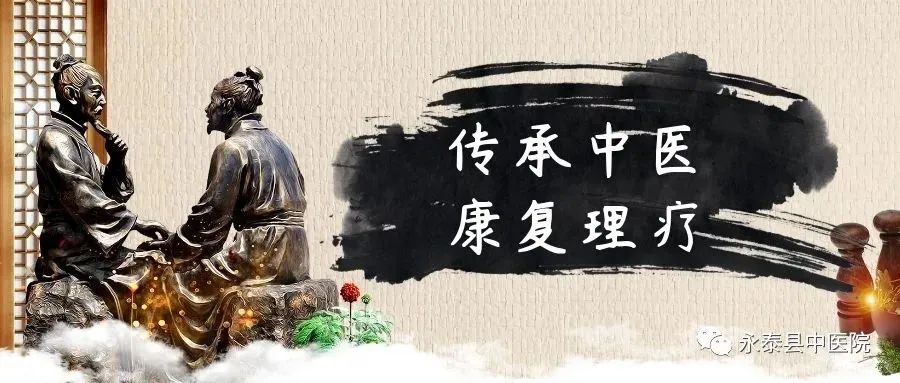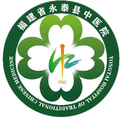

Fire needle therapy is a form of acupuncture treatment that utilizes a specially designed needle, heated until red, and then inserted into specific acupuncture points (腧穴, shùxué) or affected areas of the body. As a unique technique within acupuncture, fire needle therapy is effective in warming the meridians (经络, jīngluò), supporting Yang (扶正助阳, fú zhèng zhù yáng), and expelling pathogenic heat (祛邪引热, qū xié yǐn rè). Clinically, it can be applied alone or in combination with other acupuncture techniques. It is commonly used for treating pain in the neck, shoulders, lower back, and joints, as well as for conditions such as herpes zoster (带状疱疹, dài zhuàng pào zhěn), eczema (湿疹, shīzhěn), vitiligo (白癜风, bái diàn fēng), and psoriasis (银屑病, yín xiè bìng).
I. Common Instruments and Basic Operating Methods
(1) Common Instruments
The fire needle, as a special instrument, is made from materials different from regular filiform needles (毫针, háo zhēn) and is categorized into three types based on clinical needs: coarse, medium, and fine. The fine fire needle has a diameter not exceeding 0.5mm, suitable for superficial areas such as the face and limbs; the medium fire needle has a diameter of 0.8mm, applicable to a wider range of areas, including all tender points and around lesions; the coarse fire needle, with a diameter of 1.1mm or thicker, is primarily used for needling lesions such as sinuses, hemorrhoids, lymph node tuberculosis, abscesses, breast abscesses, ulcers, tendon sheath cysts, and skin lesions.
(2) Basic Operating Methods
The procedure includes disinfection, needle heating, insertion, manipulation, retention, and removal.
After determining the acupuncture point or needling area, disinfect the area with 75% ethanol. Use a lit alcohol lamp or a cotton ball soaked in 95% ethanol held with hemostatic forceps as the fire source. Move the fire source close to the acupuncture point with the left hand while holding the needle in a pen-holding manner with the right hand, inserting the needle tip into the outer layer of the flame. Based on the depth of insertion, determine the length of the needle to be heated. Once the needle is glowing red, quickly and accurately insert it into the acupuncture point and swiftly withdraw it, completing this process in under one second. Generally, needles are not retained; however, in special cases where retention is necessary, it can be combined with manipulation techniques. After needle removal, apply pressure with a dry cotton ball on the puncture site for a moment.
The angle of needle insertion is typically straight; for warts or growths, an oblique insertion method may be used. The depth of insertion is determined by multiple factors including the needling area, disease, and constitution. For the chest and back, it generally does not exceed 3mm, while for limbs, it may exceed 10mm.
(3) Needling Techniques
Needling techniques can be categorized into acupuncture point needling, tender point needling, dense needling, surrounding needling, and scattered needling.
1.Acupuncture Point Needling
Based on clinical manifestations, select acupuncture points for needling with fire needles. This method is primarily suitable for internal diseases, using fine and medium fire needles. The depth of insertion is generally shallower than with filiform needles.
2.Tender Point Needling (Point Needling)
Based on clinical symptoms and pattern differentiation, select specific acupuncture points along the meridians or identify the most prominent tender points at the lesion site for needling. This method is suitable for various muscle, joint, and nerve pains, primarily using medium fire needles. The depth of insertion can be slightly deeper than with acupuncture point needling.
3.Dense Needling
This technique involves densely stimulating the local lesion with medium fire needles. The density depends on the severity of the condition; for severe cases, needles are spaced 1cm apart, while for milder cases, they are spaced 1.5 cm apart. This method is mainly used for proliferative and keratotic skin diseases, such as neurodermatitis. The depth of insertion should be moderate, ideally allowing the needle tip to penetrate the diseased tissue while just touching the normal tissue.
4.Surrounding Needling
This technique involves needling around the lesion. The insertion points are often chosen at the junction of the lesion and normal tissue, primarily suitable for dermatological and surgical conditions, using medium fire needles. The distance between insertion points should be 1 to 1.5 cm. The depth of insertion should be determined by the depth of the lesion. Sometimes, direct needling to cause bleeding may be performed to remove stagnation and promote local swelling reduction.
5.Scattered Needling
This technique involves loosely needling the lesion area, commonly used for treating numbness, itching, spasms, and pain. Generally, a needle is inserted every 1.5 cm. Fine fire needles are preferred, with stimulation kept shallow.
It can also be divided into fast needling and slow needling:
1.Fast Needling
This is the most commonly used technique where the needle is quickly withdrawn after insertion, without retention.
2.Slow Needling
After inserting the fire needle into the acupuncture point or area, it is retained for 1 to 5 minutes before removal. During retention, various tonifying and draining techniques can be applied. This method is mainly suitable for lymph node tuberculosis, abscesses, cysts, and other conditions involving tissue necrosis and abnormal proliferation.
II. Common Diseases Treated with Fire Needle Therapy
(1) Frozen Shoulder (Shoulder Periarthritis)
This condition is often caused by trauma or overuse, leading to insufficient nourishment of the tendons and meridians; or due to deficiency of liver and kidney Yin, resulting in inadequate nourishment of the tendons and bones; or from external invasion of wind, cold, and dampness, causing constriction of the meridians. The main symptoms include shoulder pain and functional impairment, with widespread tenderness around the shoulder joint, which may radiate to the neck and elbow, and significant limitation of abduction.
[Treatment Principle] Expel cold and eliminate obstruction, invigorate blood and unblock meridians.
[Common Acupuncture Points] Local Ah Shi points and Tiao Kou. Apply fire needle point needling.
[Procedure] Select local pain points, use medium fire needles heated until red for point needling without retention; for larger areas of pain, multiple point needling may be performed. For Tiao Kou, use fine fire needles for direct insertion, with a depth of about 40mm, without retention. Treatment is performed once every other day, with a total of 5 sessions per course.
(2) Low Back Pain (Lumbar Strain, Lumbar Disc Herniation, Lumbar Myofascial Pain)
Low back pain is characterized by unilateral or bilateral pain in the lower back, often caused by external pathogens, falls, or excessive labor, presenting as heavy pain, soreness, numbness, and restricted movement, which may radiate to the buttocks and legs, or worsen with coughing or sneezing.
[Treatment Principle] Expel cold and eliminate dampness, unblock obstruction and relieve pain.
[Common Acupuncture Points] Primarily the governing vessel and bladder meridian points, including Shen Shu, Da Chang Shu, Wei Zhong, and local Ah Shi points.
[Procedure] The patient lies prone, exposing the skin of the lower back, and uses medium fire needles for fast needling, with a depth of about 20mm. Local Ah Shi points can be repeatedly needled, with each depth of 6 to 10mm. After needling, cupping may be applied to remove blood stasis. Treatment is performed 2 to 3 times per week, with a total of 5 sessions per course.
[Special Reminder] Avoid exposure to cold after needling and reduce excessive activity of the lower back.
(3) Wrist Ganglion (Tendon Sheath Cyst)
This condition involves a cystic mass occurring near the tendon sheath on the dorsal or palmar side of the wrist, filled with a white gelatinous fluid, often caused by chronic overuse or trauma. Clinically, it presents as a hemispherical or spindle-shaped mass on the back of the wrist, usually larger than 1cm, with a smooth surface not connected to the skin, a fixed base, and a rubbery or cystic texture, accompanied by local discomfort and pain upon gripping or pressing.
[Treatment Principle] Invigorate Qi and blood, relax tendons and unblock meridians.
[Common Acupuncture Points] Local Ah Shi points.
[Procedure] Disinfect the area, use medium fire needles for fast needling, targeting the highest point of the cyst, needling 3 to 5 points at the swollen area, or surrounding the cyst center. After needling, express the gelatinous substance from the puncture site and cover with a dry cotton ball for dressing.
(4) Herpes Zoster (Shingles)
Herpes zoster is characterized by clusters of blisters distributed in a band-like pattern along one side of the body, accompanied by severe pain. It commonly occurs in spring and autumn, often due to internal damp-heat in the liver and spleen, combined with external pathogenic factors. Early symptoms may include burning and pain in the affected area, followed by the appearance of clustered red spots and blisters, accompanied by intense pain. It often occurs in the waist and flank area but can also appear on the head, face, and lower limbs, potentially accompanied by systemic symptoms. If left untreated, it may lead to varying degrees of residual pain due to Qi and blood stagnation in the meridians.
[Treatment Principle] Soothe the liver and gallbladder, clear heat and transform dampness, dispel stasis and relieve pain.
[Common Acupuncture Points] Local Ah Shi points.
[Procedure] Disinfect the area, use medium fire needles to needle the head, middle, and tail of the blisters without retention, with a depth of 6 to 10mm. Cupping may be added to remove stasis. Larger blisters can be punctured with fire needles to allow fluid to drain, followed by wiping with a dry cotton ball. For patients with systemic symptoms, other acupuncture and herbal treatments may be combined.
[Special Reminder] After needling, apply iodine to the local skin to prevent infection and reduce exudation.
(5) Facial Paralysis (Peripheral Facial Paralysis)
Facial paralysis is characterized by the mouth and eye deviating to one side, primarily caused by deficiency of the meridians, allowing wind and cold to invade the Yangming and Shaoyang meridians, leading to obstruction of Qi and blood, resulting in insufficient nourishment of the muscles and tendons. Symptoms include facial drooping on one side, disappearance of forehead wrinkles, widening of the eye fissure, flattening of the nasolabial fold, and drooping of the mouth corner, which is pulled towards the healthy side. Patients may also experience initial pain behind the ear, taste reduction, auditory hypersensitivity, or even herpes in the external ear canal.
[Treatment Principle] Warm the meridians and unblock the collaterals, dispel wind and eliminate pathogens.
[Common Acupuncture Points] Si Bai, Yang Bai, Di Cang, Jia Che, Qian Zheng.
[Procedure] Disinfect the area, use fine fire needles for fast needling, with a depth of 3 to 6mm, without retention.
[Special Reminder] Fire needle therapy is often used in the treatment of severe facial paralysis and in the recovery phase of facial paralysis. Care should be taken to avoid facial nerves and blood vessels during the procedure.
III. Contraindications
1.Patients who are overly tense, hungry, fatigued, or intoxicated.
2.Patients with severe heart disease.
3.Patients with bleeding disorders.
4.Pregnant women.
5.Diabetic patients should use with caution based on their condition.
IV. Precautions
1.During the procedure, avoid major blood vessels, internal organs, and important structures.
2.Prevent burns or fire accidents.
3.Patients with weak constitutions should be in a lying position.
4.Inform patients of the following:① It is normal for the puncture site to become red, itchy, or develop raised red spots. ② Do not scratch if the puncture site itches. ③ Avoid bathing on the same day to protect the puncture site. ④ Wear loose clothing to avoid friction on the affected area.

Previous Articles:
[Traditional Chinese Medicine Techniques 01] Acupuncture Techniques – Filiform Needles
[Traditional Chinese Medicine Techniques 02] Acupuncture Techniques – Scalp Acupuncture
[Traditional Chinese Medicine Techniques 03] Acupuncture Techniques – Ear Acupuncture
[Traditional Chinese Medicine Techniques 04] Acupuncture Techniques – Wrist and Ankle Acupuncture

